
20 of the World’s Best Carnivals
Everyone knows Rio Carnival, but here are some of the other best places around the world where you can celebrate carnival.
Spain
January 16 to February 22, 2026
The Carnival of Santa Cruz de Tenerife is the most famous in Spain and the second most famous in the world for many people, after the Rio de Janeiro Carnival.
The incredible carnival costumes, the warmth of its people, and the beauty of the island will leave you speechless.
Parades, costume contests, events, music, drag queens, and wild fun await you at the Carnival of Tenerife. Here you will find all the information you need to visit Tenerife during Carnival.
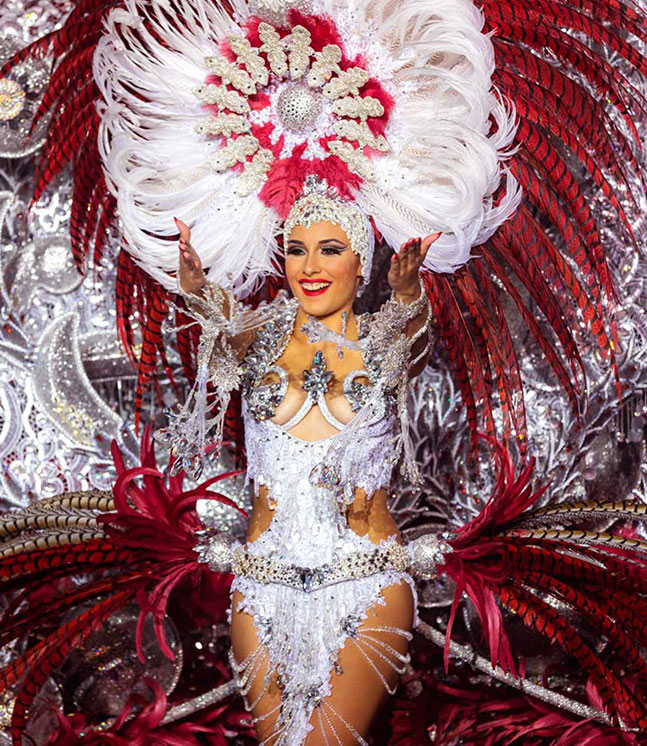
The Carnival of Santa Cruz de Tenerife lasts an entire month and is celebrated before Lent.
The main week of the Tenerife Carnival is the one preceding Ash Wednesday, when the festivities reach their peak.
During this week, businesses remain closed, and everyone takes to the streets to enjoy the carnival.
When will the Tenerife Carnival be in 2026?
The Tenerife Carnival in 2026 will be held from January 16 to February 22. This year, the theme of the carnival will be Latin Rhythms.
During this period, numerous events will take place, including murgas competitions and street parties, which are an integral part of the celebration.








Since 1965, Santa Cruz de Tenerife has celebrated the contest “Carnival Queen“, which until 1976 was officially called “Carnival Queen in the Winter Festivals“.
Each year, a queen and her court of honor are elected in the children’s, adults’, and seniors’ categories.
The Gala for the Election of the Queen, recognized as the kickoff of the carnival on the street, is one of the most prominent events, characterized by the creativity of the costumes and the participation of various groups, giving it great projection both locally and internationally.
The first Carnival Sunday and the Pinata Saturday celebrate the famous Day Carnival in the island of Tenerife, where thousands of people gather in a festive and family-friendly atmosphere. During the day, attendees can enjoy, dance, and show off their costumes, and the celebration extends into the night.
The Chicharrero Carnival culminates with the traditional Burial of the Sardine, a humorous event where widows and mourners parade through the streets of Santa Cruz de Tenerife in a procession symbolizing the end of the festivities.
This ritual, celebrated every Ash Wednesday since the 19th century, concludes with the burning of a giant sardine representing the closure of the festival of “Don Carnal,” although the last weekend, known as Piñata, still remains, in which carnival-goers enjoy the final hours of the Carnival.
The announcing Parade marks the start of the Carnival in Santa Cruz with a colorful and fantastical night parade that runs through the main streets, featuring participating groups and spontaneous joiners with humor and enthusiasm.
This event leads to a week of celebrations, with street dance and music culminating in the Coso Apoteosis del Carnaval, a final parade that takes place on Tuesday on Avenida Marítima.

Our Carnival is unbeatable, especially in the streets, where hundreds of thousands of people have gathered even despite the rain. José Manuel Bermúdez, mayor of Santa Cruz.

The Carnival of Santa Cruz de Tenerife is celebrated in the city of Santa Cruz de Tenerife, located on the island of Tenerife, which is part of the Canary Islands archipelago in Spain.
The festivities mainly take place in the city center, in places such as Plaza de España, Avenida Francisco La Roche, and the Santa Cruz Trade Fair Premises.
The Carnival of Santa Cruz de Tenerife has roots that date back to the first European settlements, although the earliest written references date to the late 18th century.
In 1778, the diary of Lope Antonio de la Guerra y Peña mentions a dance where comparsas were already talked about.
In 1783, the use of masks was prohibited, reflecting the tension between the upper bourgeoisie and the people.
At the end of the 19th century, the Carnival began to organize with the emergence of groups such as the rondalla in 1891 and the founding of the Orfeón de Santa Cruz in 1897.
During the dictatorships of Miguel Primo de Rivera and Francisco Franco, the Carnival was renamed “Winter Festivals” to evade prohibitions. However, the celebration continued, with Santa Cruz de Tenerife being one of the few places where this tradition remained alive, along with Cádiz and Isla Cristina.
In 1954, the first murga emerged, initially known as Los Bigotudos and now called Afilarmónica NiFú-NiFá.
With the end of the dictatorship in 1976, the name “Carnival” was officially restored, although the festivity had never stopped being celebrated.
Since 1962, an annual poster for the Carnival has been created, designed by recognized artists.
In 1987, a theme was introduced into the event, and a concert by Celia Cruz became a milestone, registering the highest attendance at an outdoor concert.
The main Carnival locations have changed over time, hosting events at the Guimerá Theatre, the Bullring, and the Tenerife International Trade Fair and Congress Center.
Currently, the Carnival of Santa Cruz de Tenerife seeks to be recognized as UNESCO Intangible Cultural Heritage, making it the first carnival in Spain to receive such distinction.
You should know that in the Tenerife Carnival, each carnival group has its own style and personality.
What is a Carnival Group? A carnival group is exactly what it sounds like. They are a group of people who collaborate with each other to create costumes, choreographies, music, and ideas that parade together in the carnival.
What are Murgas? The “murgas” are a type of Spanish carnival group known for their satirical performances where they sing about current events happening in the world.
What are Rondallas? The “rondallas” are another type of carnival group that is composed exclusively of string instruments such as bandurrias, guitars, octavinas, and lutes.

You have no idea what to do, what to see, where to stay, where to eat, how to get there, or what to bring to not miss out on the Carnival of Santa Cruz de Tenerife. Relax, here we tell you everything you need. Just prepare to enjoy it like never before.

What to do in the Carnival of Santa Cruz de Tenerife? Popular activities include shopping in Plaza de Candelaria and Calle del Castillo, enjoying nightlife on Avenida Anaga, and visiting the Our Lady of Africa Market to enjoy local products.
You can also relax at the César Manrique Maritime Park or go hiking in the Anaga mountains. Of course, you can’t miss the famous carnival of the city, one of the most lively events of the year.

What to see in the Carnival of Santa Cruz de Tenerife? Santa Cruz offers a blend of iconic architecture, nature, and culture.
Highlights include the Tenerife Auditorium, the Church of Our Lady of the Conception, and the Church of San Francisco, architectural gems of the city.
The Palmetum, with its vast collection of palm trees, and García Sanabria Park also deserve a visit. Plaza de España and Plaza de Candelaria are the main attractions.
The Museum of Nature and Man, with its historical exhibits, and the Art Space, dedicated to contemporary art, complete the cultural offering.

Where to stay during the Carnival of Santa Cruz de Tenerife? The Hotel Taburiente offers a central location next to García Sanabria Park and has a rooftop pool. The Hotel Horizonte is an economical option, located on a quiet street in the city center, just minutes from the port.
For a more affordable option, the Hotel Atlántico Centro is close to various points of interest and offers free Wi-Fi.
You can also consider the Hotel Escuela Santa Cruz, known for its modern architecture and proximity to key places like the Auditorium and the Exhibition Center. Enjoy the carnival!

Where to eat during the Carnival of Santa Cruz de Tenerife? During the carnival in Tenerife, there is a wide variety of restaurants and bars where you can enjoy local cuisine.
Some of the most typical are Taberna Ramón, known for its traditional Canarian cuisine, and Restaurante El Aguarde, offering seasonal and market cuisine. You can also visit Bodegón El Puntero, famous for its Canarian dishes like papas arrugadas and mojo picón.
For a more casual experience, Mesón Los Gemelos in Puerto de la Cruz is an excellent option. Enjoy the carnival and the delicious Canarian food!

How to get to the Carnival of Santa Cruz de Tenerife? Tenerife has two main airports: Tenerife Sur (Reina Sofía) and Tenerife Norte (Los Rodeos). The former is located 60 km from Santa Cruz and receives international flights, while the latter focuses on domestic flights.
The taxi ride from Tenerife Sur airport to Santa Cruz costs between 15 and 60 euros, but you can also take a bus connecting both airports with the city.
The port of Santa Cruz de Tenerife is one of the main ports in Spain and has ferry connections to Cádiz and other islands.

What to bring to the Carnival of Santa Cruz de Tenerife? Dressing up is essential for the Carnival in Tenerife, otherwise, you will stand out. Costumes are very important, and some locals wear up to 5 or 6 different outfits throughout the festivities, even changing between events.
However, this is not so common during the parades, where most people dress up for street parties. If you're shy, a simple wig, mask, or hat will suffice, but you’ll be surrounded by people in creative costumes, ranging from Cleopatra to superheroes.
Don’t worry if you’re unprepared: there are costume vendors everywhere. Although winter in the Canary Islands is mild, the weather in February is unpredictable, so pack accordingly.

Everyone knows Rio Carnival, but here are some of the other best places around the world where you can celebrate carnival.

Masks throughout history have been one of the most sacred objects for many civilizations. To understand why they are, it is necessary to delve into their history.

The Tenerife Carnival is the biggest party in Europe. Here are the best suggestions to have the time of your life.

Here is everything you need to know about the history and the origins of carnival, the world’s oldest party!

Rio de Janeiro Carnival is the biggest & most famous carnival celebration in the world. Rio hosts the world-famous parades, street parties & masquerade balls.
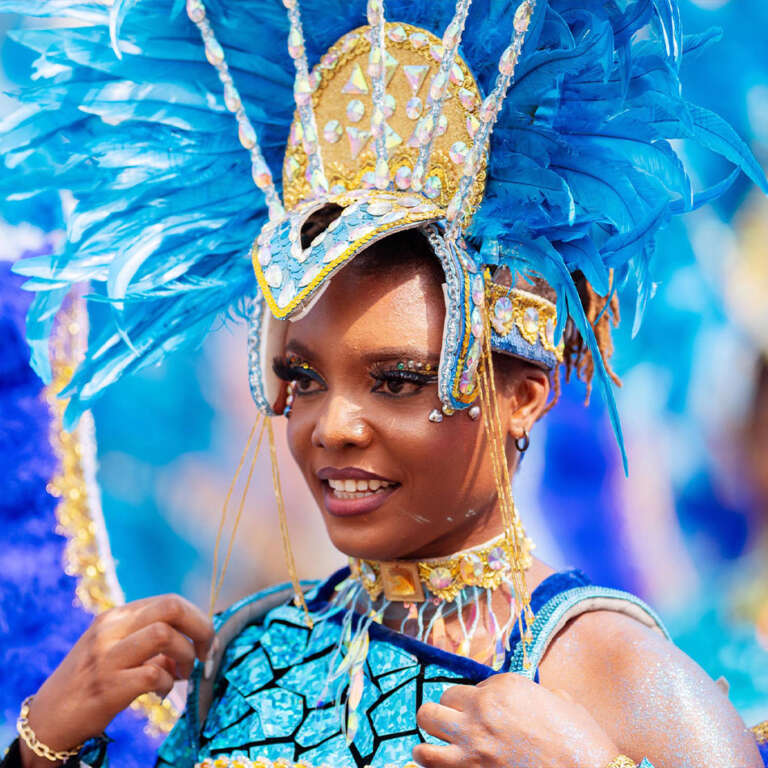
December 1 to December 31, 2025
Over two million tourists visit the Calabar carnival every year, the pride of Nigeria.
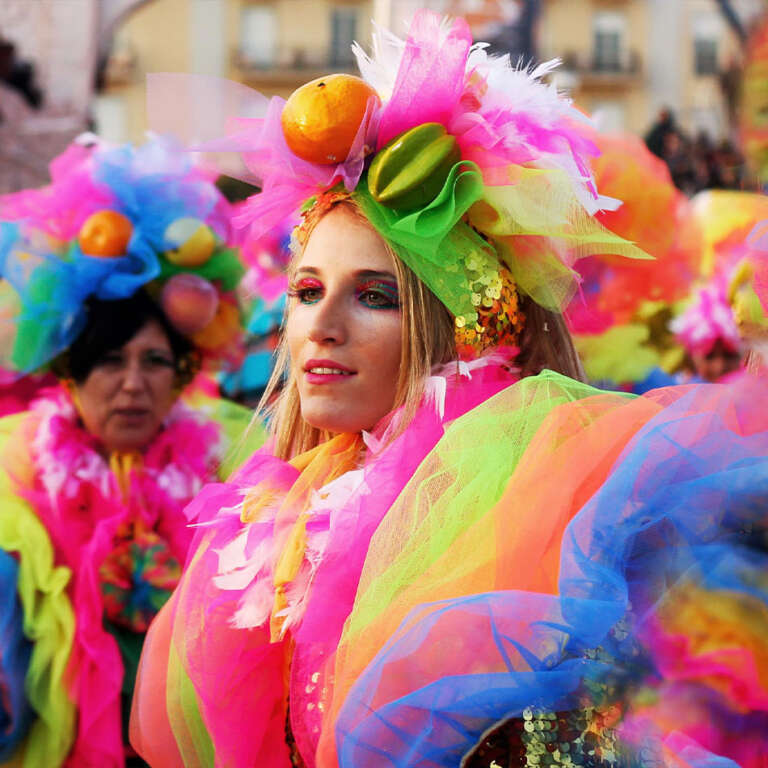
February 1 to 21, 2026
Giant floats, beautiful masks, hypnotic dances, joy, and fun.
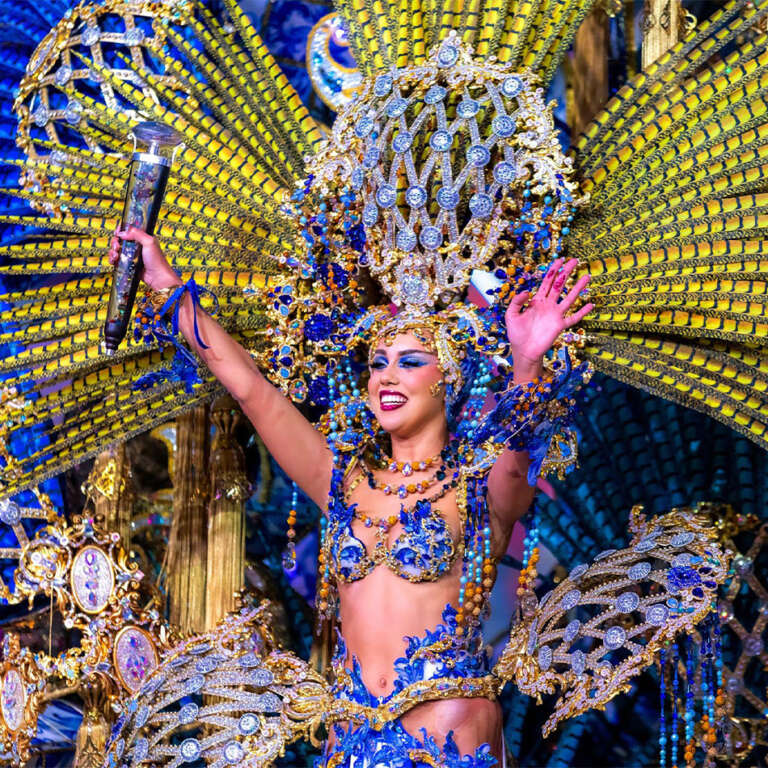
January 16 to February 22, 2026
More than 250,000 people visit Santa Cruz in Tenerife to celebrate the carnival.
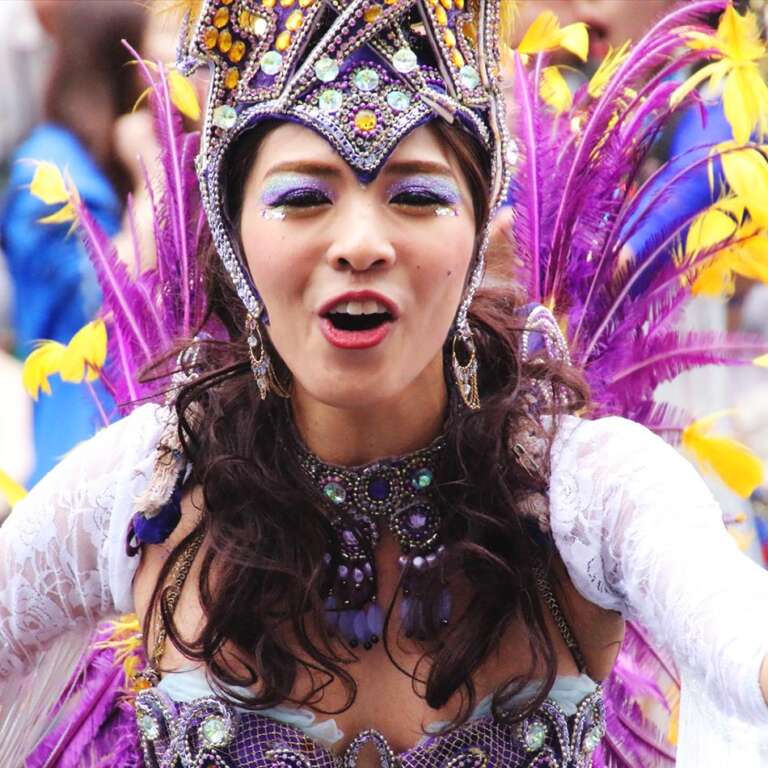
From late August to mid-September 2025
Let yourself be carried away by the magic of Brazilian samba on the streets of Japan.
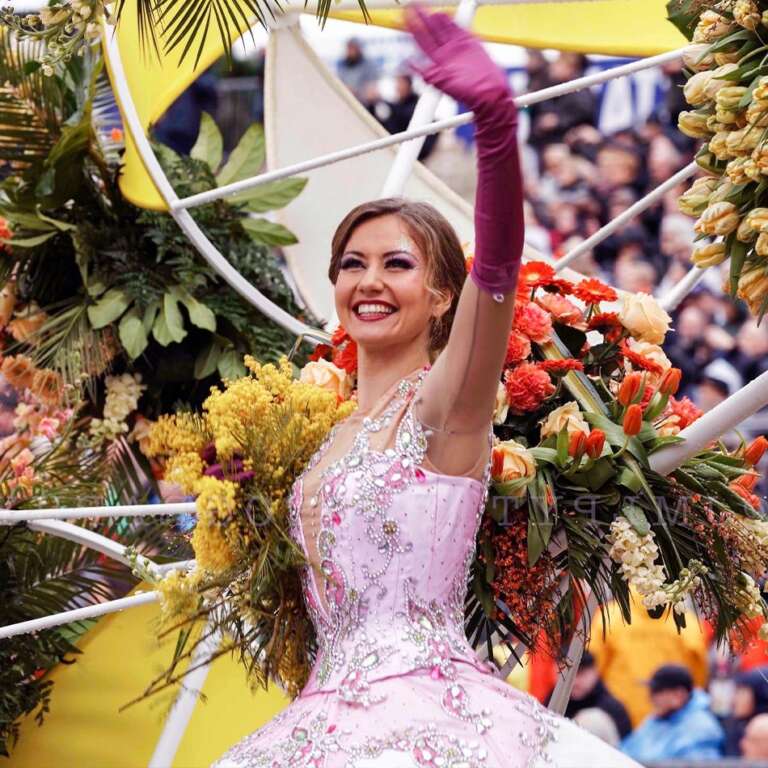
February 11 to March 1, 2026
You will be amazed by a shower of over one hundred thousand flowers falling from the sky.
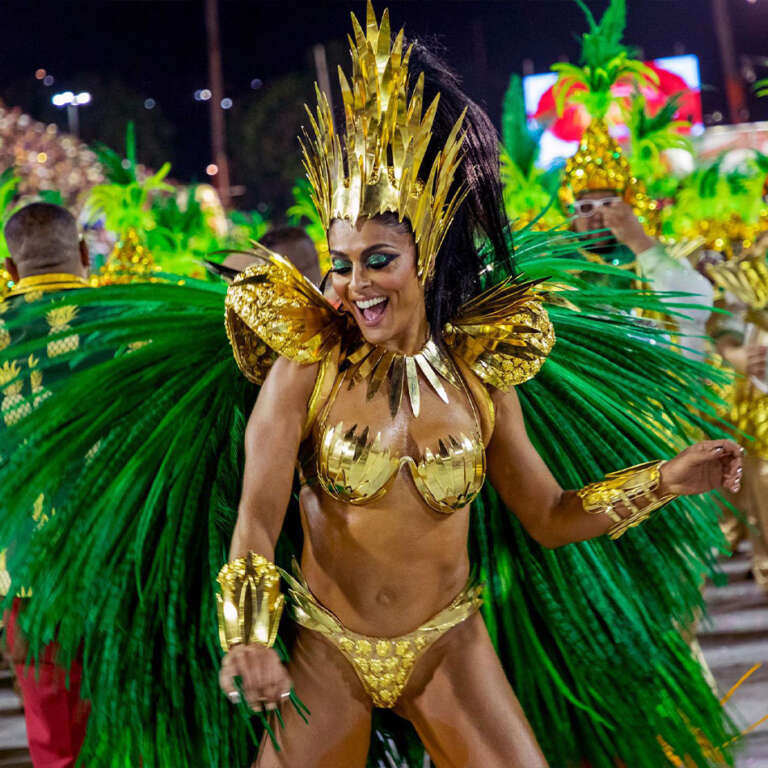
February 13th to February 21st, 2026
Parades, samba, blocos, street parties, masked dances, and nightlife.